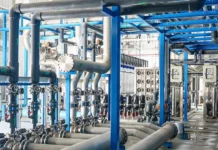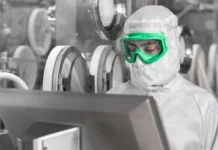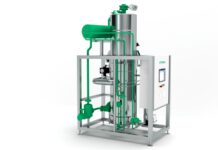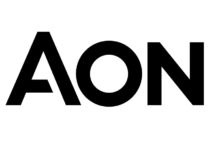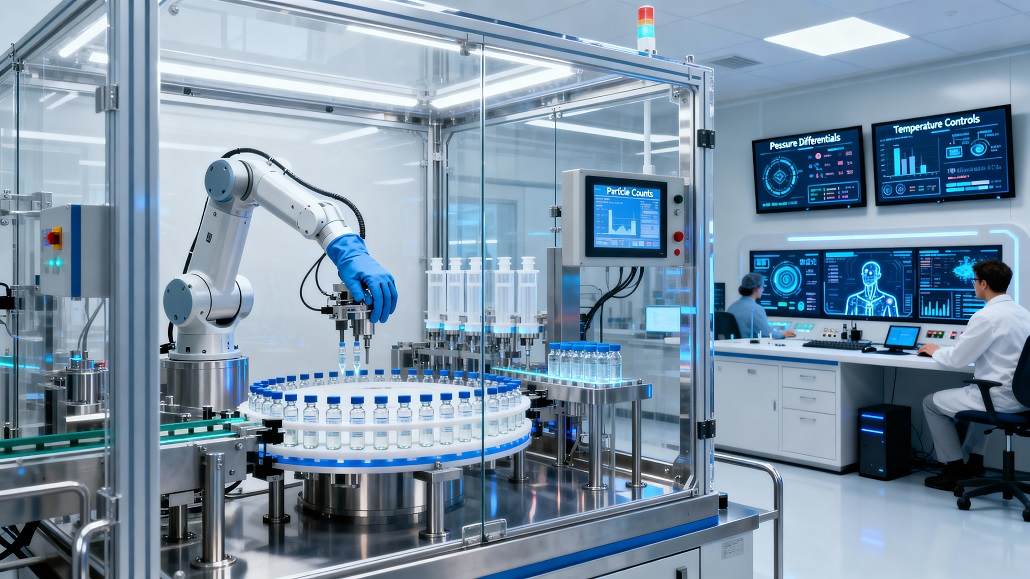Sterile pharmaceutical manufacturing represents one of the most technically demanding and highly regulated aspects of pharmaceutical production. The stakes are exceptionally high—any compromise in sterility assurance can render entire batches unusable or, worse, lead to contaminated products reaching patients with potentially catastrophic consequences. The pharmaceutical industry has responded to this critical challenge through continuous innovation in aseptic processing technology, manufacturing facilities, and quality assurance systems. Advanced sterile manufacturing innovations are driving unprecedented levels of precision, speed, and regulatory confidence in injectable product manufacturing.
The Critical Importance of Sterile Manufacturing Excellence
Patient Safety and Regulatory Imperatives
Injectable pharmaceutical products require absolute sterility. Unlike oral drugs where patient immune systems can often manage minor microbial contamination, parenteral products bypass the body’s primary defense mechanisms, delivering compounds directly into bloodstreams, tissues, or cerebrospinal fluid. Contamination in sterile injectables can cause severe infections, sepsis, or death. Regulatory agencies therefore maintain exceptionally stringent requirements for sterile manufacturing, with sterility assurance standards designed to ensure less than one in a million probability of contamination.
This exceptionally high safety bar drives continuous innovation. The pharmaceutical industry invests billions annually in manufacturing technology to progressively reduce contamination risks, improve process consistency, and accelerate batch manufacturing timelines. The innovations emerging from this investment are transforming how injectable products are manufactured, enabling companies to produce safer products at greater speeds while maintaining absolute quality assurance.
Competitive and Economic Drivers
Beyond regulatory requirements, economic forces drive sterile manufacturing innovation. Developing novel injectable therapies represents enormous investment, with manufacturing often representing 30-50% of product cost of goods sold. Companies that can produce injectables more efficiently while maintaining superior quality gain significant competitive advantages. This combination of safety imperatives and competitive economics creates powerful motivation for continuous manufacturing innovation.
Isolator Technology: Revolutionizing Aseptic Processing
Fundamental Principles and Evolution
Isolators represent perhaps the most significant innovation in aseptic processing, fundamentally changing how sterile manufacturing facilities operate. Traditional aseptic processing occurred in laminar airflow hoods where operators worked within controlled air environments designed to maintain positive pressure with respect to surrounding facilities, protecting products while operators remained outside the direct airflow. While effective, this approach left potential for human error as operators manipulated products in proximity to critical processing steps.
Isolators invert this architecture. The sterile processing environment becomes completely enclosed within a sealed chamber, accessed only through airlocks or specialized entry systems. Operators work outside the isolator, manipulating products and equipment through integrated gloved ports that allow manual dexterity while maintaining sealed sterile environments. This architecture provides superior contamination control by physically separating sterile processing from the external environment.
The evolution of isolator technology accelerated dramatically beginning in the 1980s, with progressive improvements in seal technology, glove reliability, decontamination systems, and operational convenience. Modern isolators employ sophisticated air handling systems that maintain positive pressure differentials, continuous microbial monitoring, and rapid decontamination cycles. This evolution has transformed isolators from specialized niche solutions to mainstream technology in advanced manufacturing facilities.
Environmental Monitorability and Continuous Assurance
One of the most significant advantages of isolator technology is the ability to comprehensively monitor environmental conditions continuously. Isolators incorporate extensive sensor arrays monitoring pressure differentials, temperature, humidity, and airflow patterns. These sensors generate continuous data feeds, creating real-time records of environmental conditions within the isolator. Any deviation from specified parameters triggers alarms alerting operators and facility management.
This continuous monitoring transforms sterility assurance from periodic verification to continuous demonstration. Rather than conducting periodic environmental sampling and hoping that results reflect actual conditions during manufacturing, isolator technology enables real-time documentation that environmental conditions remained within specifications throughout processing. This shift from retrospective assurance to prospective documentation represents a fundamental improvement in regulatory confidence.
Gloveless Isolators and Robotic Integration
The latest evolution in isolator technology eliminates human operators entirely through gloveless isolator designs where robotic systems conduct all material manipulation. In these systems, isolators are completely closed and sealed, with robotic arms manipulating containers, transferring materials, and conducting filling operations under computer control. Human operators supervise the process from control stations outside the isolator, providing oversight and intervention capability without directly contacting sterile environments.
Gloveless isolators provide superior contamination control by eliminating the one source of contamination that has consistently challenged traditional isolators—glove integrity. Human gloves, despite rigorous testing and quality assurance processes, occasionally develop microscopic punctures during processing. Glove leakage through pinhole defects has been implicated in a number of pharmaceutical contamination events and product recalls. Eliminating this contamination source through complete automation represents a major advance in sterility assurance.
Robotic Filling Systems: Precision and Consistency
Automated Handling and Precision Dispensing
Robotic filling systems have fundamentally transformed small-batch and specialty injectable manufacturing. Traditional filling processes rely heavily on operator skill and judgment. Operators manually position vials, trigger filling equipment, and monitor fill volumes. While trained operators are remarkably consistent, human performance inevitably shows variation, and operator fatigue can impact consistency during long production runs.
Robotic systems eliminate this variation through precise, repeatable automated movements. Robotic arms position vials with micron-level precision, ensuring optimal fill heights and consistent headspace volumes. Computer-controlled filling equipment dispenses exact volumes, with sensors verifying fill accuracy in real-time. Production rates that took months to optimize with manual operators can be achieved immediately with robotic systems once programming is completed.
The precision of robotic systems extends beyond basic filling to advanced operations. Robotic systems can precisely position special labels, apply protective coatings, conduct capping operations with controlled torque, and arrange finished products into shipping containers with perfect consistency. This comprehensive automation transforms manufacturing from labor-intensive manual processes to highly optimized automated operations.
Flexibility for Small-Batch and Specialty Production
A misconception exists that robotics only benefits high-volume manufacturing. In reality, modern robotic systems provide particular advantages for small-batch and specialty products. Traditional manufacturing equipment optimizes for high-volume production, with extensive setup requirements and inflexible operation. Specialty products that require small production runs and frequent manufacturing changes found such equipment inefficient and economically unviable.
Modern robotic systems employ modular designs where equipment configurations can be rapidly adjusted for different products. Programming changes enable the same robotic system to transition from one product to another within hours rather than days. This flexibility makes robotics economically viable even for low-volume manufacturing, where it provides superior consistency and safety assurance compared to manual processes.
For advanced therapies including biologics, gene therapies, and cell therapies, this flexibility is essential. These products often require small initial manufacturing runs, yet demand absolute sterility assurance and consistent quality. Robotic systems enable such specialized manufacturing while maintaining the safety and consistency typically associated with high-volume operations.
Advanced Environmental Control and Monitoring
Particle and Microbial Monitoring Systems
Modern manufacturing facilities employ unprecedented levels of environmental monitoring to assure continuous compliance with sterility standards. Real-time particle counters continuously measure particulate matter in air at multiple locations within manufacturing areas, immediately alerting to any deviation that might indicate filter failure or environmental compromise. These systems can detect particle counts that would be invisible to visual inspection but could compromise product sterility.
Microbial monitoring systems represent another major advance, employing rapid detection technologies that identify microbial contamination within hours rather than the days required by traditional culture methods. These systems can sample air at multiple locations, surfaces at critical processing areas, and even water systems used in manufacturing. Continuous monitoring creates an early warning system that allows rapid response to any environmental compromise before it affects product.
Viable sampling programs that collect microorganisms from air and surfaces during actual manufacturing (not just during cleaning validation) provide the most direct evidence that manufacturing environments support sterile operations. Advanced programs now employ continuous microbial monitoring that collects data throughout manufacturing runs rather than only between batches, creating comprehensive records of environmental conditions during actual product processing.
Process Analytical Technology and Real-Time Quality Monitoring
Beyond environmental monitoring, modern sterile manufacturing employs advanced analytical technologies that monitor critical product characteristics in real-time during manufacturing. These process analytical technology (PAT) systems collect data on product temperature, pressure, fill weights, and other critical parameters as manufacturing progresses. Advanced algorithms analyze this data against expected process signatures, identifying any deviation from normal operation that might indicate equipment malfunction or process deviation.
This real-time monitoring transforms quality assurance from retrospective batch testing to prospective process control. Rather than manufacturing an entire batch then measuring its quality, manufacturers monitor quality as manufacturing occurs and implement corrective actions in real-time if deviations are detected. This shift from end-product testing to in-process control dramatically improves the probability of identifying and correcting problems before they compromise entire batches.
Aseptic Processing Innovation and Risk Management
Risk-Based Approach to Aseptic Validation
Regulatory guidance for aseptic processes emphasizes risk-based approaches that recognize that different manufacturing steps present different contamination risks. High-risk steps that directly contact product require particularly rigorous controls, while lower-risk steps might accept more modest controls. This risk stratification allows manufacturers to focus validation efforts on the critical steps where contamination is most likely, allocating resources most efficiently.
Advanced manufacturers now employ sophisticated risk assessment methodologies that identify contamination sources, evaluate probability of contamination reaching products, and implement controls commensurate with each specific risk. This approach replaces universal, one-size-fits-all controls with intelligent risk-based systems tailored to each specific manufacturing scenario. Over time, this risk-based approach enables continuous improvement as manufacturers learn which controls are most effective at preventing specific contamination sources.
Continuous Verification Rather Than Static Validation
Regulatory paradigms are shifting from static validation conducted once during manufacturing setup to continuous verification conducted throughout production. Rather than establishing that a process is capable of sterile production during initial validation studies, manufacturers must now continuously verify that operations remain capable throughout the life of the product.
This continuous verification approach employs multiple data streams including real-time environmental monitoring, periodic process simulation studies conducted during regular production, product sterility testing results, and assessment of any manufacturing deviations. By integrating data from multiple sources, manufacturers develop comprehensive confidence that sterile operations remain robust rather than assuming that initial validation remains relevant despite changes in equipment, personnel, or procedures.
Advanced Monitoring Systems and Data Integration
Automated Data Collection and Analysis
Modern manufacturing facilities now employ comprehensive data collection systems that capture information from every stage of manufacturing. Filling equipment generates data on fill weights, fill heights, and machine performance. Environmental monitoring systems report particle counts and microbial results. Process equipment monitors temperature, pressure, and flow rates. All of this data flows into centralized data management systems that provide real-time dashboards showing manufacturing status and historical trending.
Artificial intelligence systems analyze this comprehensive data, identifying patterns and anomalies that human analysts might miss. Advanced algorithms can predict equipment maintenance needs before failure occurs, identify subtle process drifts that might compromise quality before products are affected, and even suggest process optimization opportunities based on analysis of historical data. This AI-driven analytical capability transforms manufacturing from reactive troubleshooting to proactive optimization.
Quality by Design Principles
Quality by Design (QbD) represents a paradigm emphasizing that quality must be designed into manufacturing processes rather than tested into products. Advanced sterile manufacturers employ QbD principles throughout product and process development, identifying critical quality attributes, establishing design spaces where processes can reliably produce on-specification products, and implementing monitoring systems that maintain operations within established design spaces.
QbD approaches inherently leverage advanced technology for comprehensive monitoring and understanding of manufacturing processes. Manufacturers cannot establish design spaces without detailed knowledge of how process parameters affect product quality. This knowledge requires the sophisticated analytical and monitoring systems described above. As manufacturers increasingly adopt QbD principles, they necessarily invest in the advanced technologies that enable such approaches.
Specialized Manufacturing for Advanced Therapies
Aseptic Processing for Biologics and Cell Therapies
The rise of biologic and advanced therapy manufacturing has driven innovation in sterile processing specifically tailored to these unique requirements. Unlike small-molecule drugs that can often tolerate some agitation or temperature variation during manufacturing, biologics and cell therapies require gentle handling in carefully controlled environments. This requirement for both sterility assurance and gentle handling creates particular technical challenges.
Manufacturers of advanced therapies increasingly employ specialized aseptic processing technologies including biosensors that maintain optimal conditions for live cells or protein products, closed-system transfer systems that enable material transfer without exposure to external environments, and specialized isolator designs that accommodate the specific requirements of biologic manufacturing. These specialized systems represent the cutting edge of aseptic manufacturing innovation.
Continuous Manufacturing Integration
An emerging trend in advanced manufacturing is integration of sterile processing with continuous manufacturing approaches. Rather than traditional batch processes where all materials move through manufacturing together in discrete batches, continuous systems produce product in a steady stream where material flows through equipment continuously. This continuous approach offers potential advantages including reduced contamination risk through shorter residence times in manufacturing environments and improved consistency through elimination of batch-to-batch variation.
Implementing continuous aseptic manufacturing requires novel approaches to environmental control, contamination monitoring, and regulatory compliance. The pharmaceutical industry and regulatory agencies are collaboratively developing frameworks for continuous sterile manufacturing that maintain rigorous safety assurance while enabling efficient continuous operations.
Regulatory Evolution and Inspection Perspectives
Adaptive Regulatory Framework
Regulatory agencies recognize that as manufacturing technology advances, regulatory requirements must evolve to accommodate new capabilities while maintaining safety standards. FDA and EMA guidance documents explicitly encourage manufacturers to adopt innovative approaches to sterile processing, including advanced isolators, robotic systems, and real-time monitoring technologies. This evolving regulatory framework rewards companies that invest in advanced manufacturing.
Inspections increasingly focus on understanding and evaluating advanced systems rather than assuming that traditional approaches remain optimal. Inspectors now receive training in robotics, advanced isolators, and data-driven quality systems. This investment in regulatory expertise enables more productive regulatory interactions where inspectors understand the technical basis for innovative approaches rather than defaulting to familiar traditional processes.
Data Integrity and Regulatory Confidence
Modern sterile manufacturing creates enormous data streams from monitoring systems, analytical equipment, and process control systems. Maintaining integrity of this data is essential for regulatory compliance and operational confidence. Regulatory guidance increasingly emphasizes data integrity requirements including access controls, audit trails, electronic signatures, and system validation. Advanced manufacturers invest substantially in information technology infrastructure ensuring that manufacturing data is authentic, preserved, and traceable throughout production.
Future Innovations and Emerging Directions
Artificial Intelligence and Predictive Manufacturing
The application of artificial intelligence to pharmaceutical manufacturing is expanding rapidly. AI systems can learn from historical manufacturing data to predict optimal operating conditions for each product, identify subtle process signatures indicating equipment degradation before failure occurs, and even suggest manufacturing improvements based on analysis of vast datasets. As these capabilities mature, AI-driven manufacturing will enable autonomous operation of sterile processes with minimal human intervention.
Continuous Verification and Adaptive Systems
Future manufacturing systems will employ continuous verification where sterility assurance improves continuously as more data is collected during commercial production. Rather than static validation and periodic monitoring, future systems will implement adaptive controls that evolve as manufacturing experience accumulates. This approach allows manufacturing to become progressively more optimized as experience with each product and process increases.
Conclusion
Advanced sterile manufacturing innovations are fundamentally transforming injectable pharmaceutical production. Through isolator technology, robotic systems, advanced environmental monitoring, and AI-driven analytics, the pharmaceutical industry is achieving unprecedented levels of sterility assurance, manufacturing consistency, and operational efficiency. These innovations enable production of complex injectable therapies at speeds previously impossible while maintaining the absolute quality standards required for patient safety.
Organizations investing in advanced sterile manufacturing technologies gain significant competitive advantages through improved product quality, reduced manufacturing costs, and enhanced regulatory compliance. As the industry continues advancing toward more sophisticated therapeutic modalities, advanced sterile manufacturing excellence will increasingly differentiate successful pharmaceutical companies from those relying on traditional approaches.
The future of sterile pharmaceutical manufacturing will be characterized by intelligent, automated, continuously monitored systems that apply comprehensive data analytics to optimize every aspect of injectable product production. Companies embracing this future will drive innovation in injectable therapeutics while maintaining the highest standards of product quality and patient safety.





